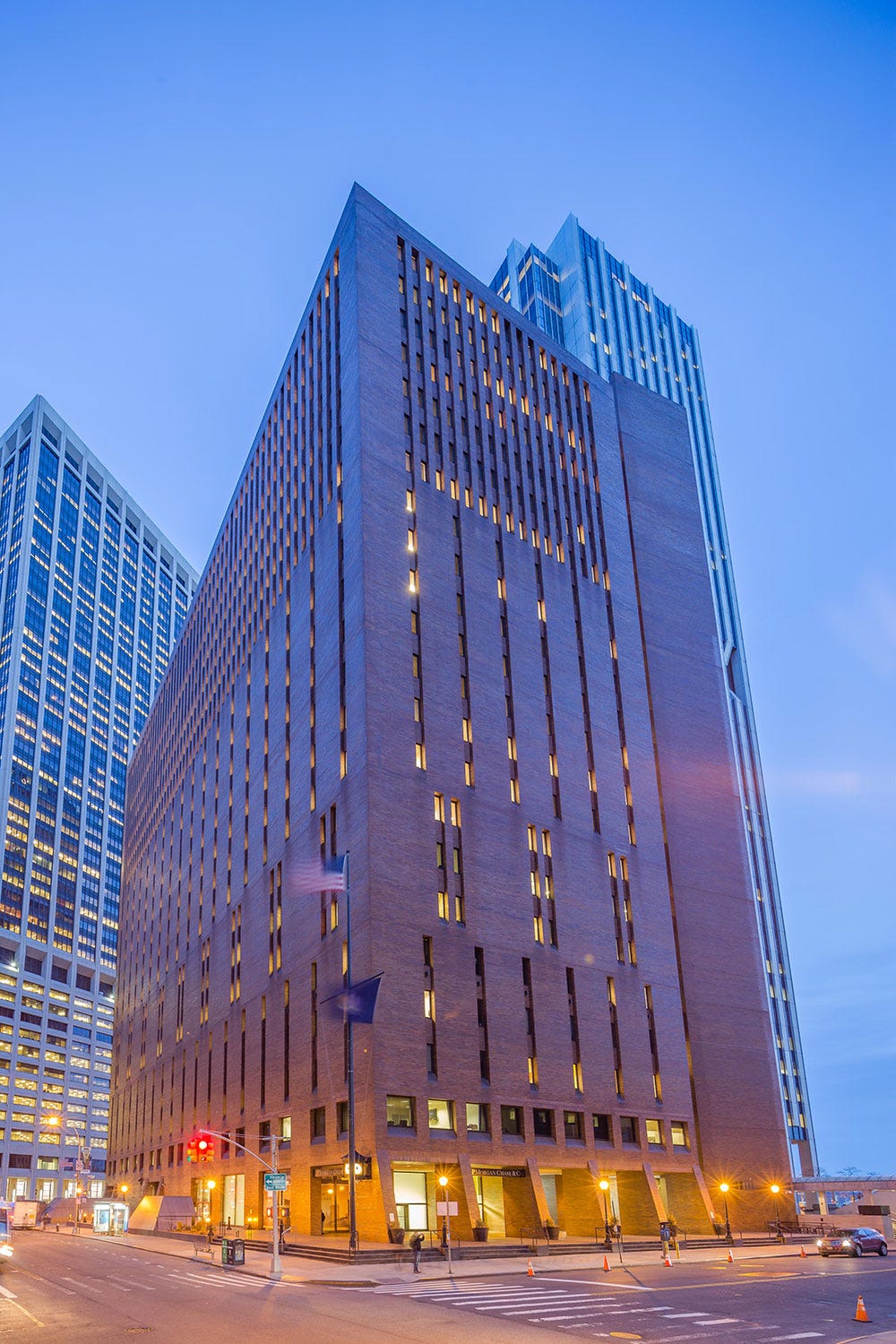Colin here. As remote work continues to drive people out of central business districts (as least for now), a potential solution for the urban housing shortage is to convert office buildings to residences. It is taking place around New York, where 25 Water Street is being shifted from offices into 1,300 apartments.
According to Globe Street:
The partnership said the building will be converted to apartments during the next three years, the largest office-to-apartment adaptive reuse project in NYC thus far this year. According to a report in The Wall Street Journal, a third of the office space at 55 Broad currently is empty. Tenants in the building are primarily financial services and tech firms.
Why is this interesting?
On its face, this seems like a no-brainer. Central business districts are going empty, and thousands of square footage of space could repurposed for apartments. There are examples of this working with certain parts of downtown NYC after the 1987 crash and then again after 9/11 thanks to tax incentives. But, alas, it isn’t that simple given some of the floor plates of the buildings and the way commercial leases are structured.
According to the Economist:
Yet the pace of conversions would be higher were it not for a range of challenges. Some are practical. Flats require natural light and windows in each room—the large floor plans of modern office blocks often leave them stuck with poorly lit and badly ventilated spaces. Bathrooms in office buildings tend to be clustered in just one area, making plumbing a nightmare. Other challenges are related to red tape. Zoning laws restrict housing in many office districts. In some cases, height and density rules or affordable-housing requirements raise costs. Moody’s Analytics, a consultancy, reckons that less than 3% of the 1,100 office buildings it tracks in New York meet the various criteria.
Then there is the problem of existing tenants, many of whom are on leasing terms much longer than residential ones. Many commercial leases are around 10 years.
So this might not be the be-all-end-all save for what to do with urban centers. Sure, there will be instances where space and economics work. But the gap between how we live and how we used to live seems to widen, there isn’t an easy solve just yet. (CJN)
Want to run a WITI classified? Want to reach 20,000 brilliant readers? WITI classifieds start at $250, and you can purchase one through this form. If you buy this week, we’ll throw an extra week in for free on any ad. If you have any questions, don’t hesitate to drop us a line.
The Mandate is a newsletter on topics men don't like to talk about. Written by Olympic Medalist & NYT/Men's Health contributor, Jason Rogers. Subscribe for free
—
Thanks for reading,
Noah (NRB) & Colin (CJN)
—
Why is this interesting? is a daily email from Noah Brier & Colin Nagy (and friends!) about interesting things. If you’ve enjoyed this edition, please consider forwarding it to a friend. If you’re reading it for the first time, consider subscribing.





I used to work in that building. Truly horrid design - barely any windows!
Having converted an office building into apartments, there are even more difficulties than those listed.
The complicating issue for the surrounding area is density: an office building that might have housed 1,000 workers will only have 300 to maybe 400 residents once converted. A big impact to area retailers and restaurants, who might not anyway be equipped to serve an actual neighborhood